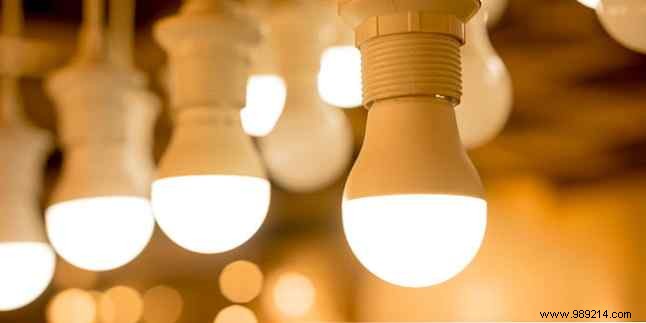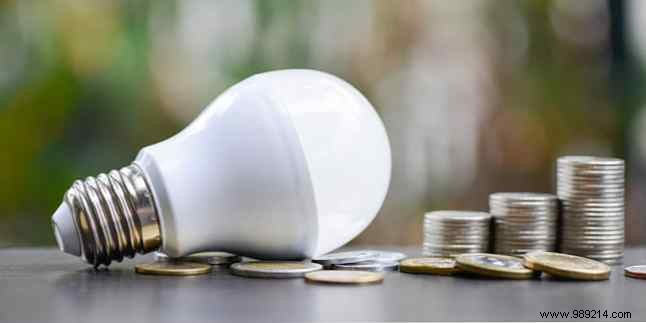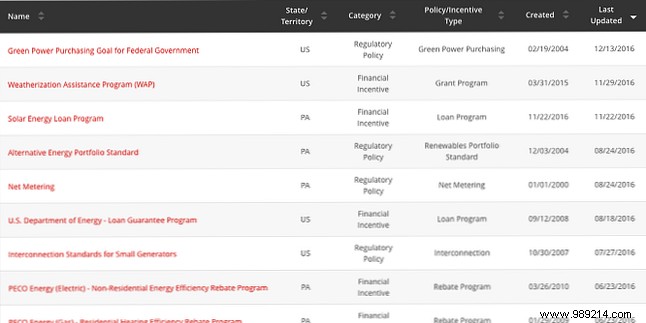If you're still using incandescent bulbs to light your home at this time, you could be unnecessarily throwing a lot of money down the drain. Incandescent bulbs are wasteful:most of the wattage is lost as heat rather than light, and heat is not an energy-saving type of heat.
What are your alternatives?
Most people now use compact fluorescent light bulbs (CFLs), which use less energy but have their own drawbacks, such as the artificial feel of light, the flickering effect that can sometimes occur, and the use of mercury (which is toxic and escapes when the bulb breaks).
Others have started using halogen lights because they are the most similar to incandescent bulbs:warm and bright. Unfortunately, halogen lights aren't much more efficient than incandescent lights, so they won't reduce your energy footprint as much as you'd hope.
But there is another option:the light-emitting diode (LED) bulb , which has just started to become popular in the last decade. Here's what you need to know before you decide if LED bulbs are right for you.
Incandescent light bulbs pass enough electricity through a wire for it to heat up and glow. CFLs run electricity through a gas that generates ultraviolet light, and when that light hits the bulb's fluorescent coating, it emits visible light.
LED bulbs are fundamentally different in the way they produce light:They run electricity through a semiconductor material, called a diode, which emits light whenever an electrical current passes through it.

The nice thing about this process is that most LED bulbs produce blue light, and blue light can be converted to other colors using phosphors. A phosphor is a material or chemical that absorbs one type of light and emits another type of light. So when a blue-emitting LED is mixed with red and green phosphors, the resulting light can be almost any color.
In other words, older LED bulbs may have suffered from color and brightness limitations in the past, but you don't need to worry about that now. Modern LED bulbs have come a long way and are good enough for everyday home use.
In fact, cutting-edge LED bulbs can do some amazing things, like integrate with smart devices in your home. With a little creativity, these integrations can result in some impressive home lighting setups.
There are two main considerations to keep in mind when considering the cost of using LED bulbs compared to other types of bulbs:the initial cost and the cost of life .
The initial cost is what you pay for the bulb. Or in other words, the cost per bulb. Let's compare the prices of 60W equivalent incandescent, CFL, halogen and LED bulbs. To keep things consistent, I'm going to use Amazon:
As you can see, LED bulbs are significantly more expensive per bulb than the more common incandescent and fluorescent types, but are still quite a bit cheaper than the not-so-efficient halogens.
In a studio with ten bulbs, you'd spend about $8.50 for incandescents or $36.60 for LEDs, which is not an insignificant difference. And it becomes even more pronounced for those of you who live in multi-bedroom apartments, condos, or single-family homes. LEDs definitely lose out here.

What about lifetime cost?? Or, as I like to think of it, how much will it cost me to run these bulbs for a year? How long would it take for the lifetime cost of an LED bulb to make up the gap in initial cost? To make those calculations, here's what we need to know:
For incandescent bulbs: 60W per bulb x 30 bulbs x 8 hours per day x 365 days per year =5,256 kWh. Multiply that by $0.125 per kWh and you spend $657 per year.
For LED bulbs: 10W per bulb x 30 bulbs x 8 hours per day x 365 days per year =876 kWh. Multiply that by $0.125 per kWh and you'll be spending $109.50 for the year.
So by using LED bulbs instead of incandescent bulbs in this particular situation, you'd end up saving $547.50 over the course of a year. The difference between 30 incandescent bulbs ($25.50) and 30 LED bulbs ($109.80) would be $84.30. In just one year, you've covered the initial cost of LED bulbs and started saving! It's just one of many examples where the upfront cost is worth it.

One more note about cost:You may be eligible for government incentives that save you even more money with LED bulbs. In the US, you can use the DSIRE website to find and track all types of energy-related rebates, programs, policies, and incentives.
These benefits are available at the state and federal levels, so you'll need to enter your zip code to see which ones apply to you.
Despite the huge potential in cost savings, there are a few other pros and cons to consider before you dive in and convert your home to LED bulbs.
Despite the possible drawbacks, I am convinced that LED bulbs are better than incandescent bulbs and CFL bulbs, at least when it comes to residential use. They're cheaper in the long run, more environmentally friendly, and don't have the risks and drawbacks of CFLs.
If you want to save even more energy, upgrade to a smart thermostat. 7 Nest Automation Tricks to Cut Your Heating Bill in Half 7 Nest Automation Tricks to Cut Your Heating Bill in Half If there was a Nest Thermostat in every home, it would have the largest single impact on energy use in history; And it could save you more money than you can imagine. That is how. Read more . You can also consider purchasing smart LED light bulbs, which can improve the security of your home. 4 Ways A Smart LED Light Bulb Can Keep Your Home Safe And Secure 4 Ways A Smart LED Light Bulb Can Keep Your Home Safe And Secure Did You Know Some LED Bulbs Could Be The Difference Between A Burglary And Peace Of Mind ? It sounds weird, but it's true. Read more.
The only major reason not to use LED bulbs is when you need a lot of intense brightness for long periods of time, like when shooting. In that case, LEDs won't be enough (and you probably won't be able to find LED lighting equipment anyway).
What kind of light bulbs do you use in your home? Are you going to switch to LEDs now? If not, why not? Share your thoughts and experiences with us in the comments!